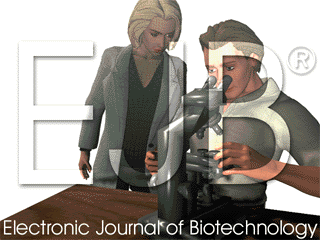Abstract
Recent developments in molecular biology and statistics have opened the possibility of identifying and using genomic variation and major genes for the genetic improvement of livestock. Information concerning the basis of these techniques and their applications to the genetic improvement of animals is reviewed. Main marker molecular marker systems in animals (RFPL and microsatellites), genome maps, methods for detecting marker major gene linkages and use of marker assisted selection, genetic fingerprinting and mixture models based on segregation analysis are analyzed. The characteristics where the application of marker assisted selection can be more effective are those that are expressed late in the life of the animal, or controlled by a few pairs of genes. The first example correspond to the longevity and carcass characteristics in meat producing animals, the second, to the resistance to certain diseases or defects of simple inheritance. The detection of major genes using mixture models with segregation analysis can direct the work of identification of DNA marker genotypes towards populations and characteristics with greater probability of detecting a major gene using molecular markers. The present trend indicates that molecular, pedigree and phenotypic information will be integrated in the future through mixture models of segregation analysis that might contain major gene effects through the markers, polygenic inheritance and uses powerful and flexible methods of estimation such as Gibbs Sampling.
Upon acceptance of an article by the journal, authors will be asked to transfer the copyright to Electronic Journal of Biotechnology, which is committed to maintain the electronic access to the journal and to administer a policy of fair control and ensure the widest possible dissemination of the information. The author can use the article for academic purposes, stating clearly the following: "Published in Electronic Journal of Biotechnology at DOI:10.2225/volXX-issueX-fulltext-XX".
The Copyright Transfer Agreement must be submitted as a signed scanned copy to biotec@ucv.cl. All authors must send a copy of this document.
